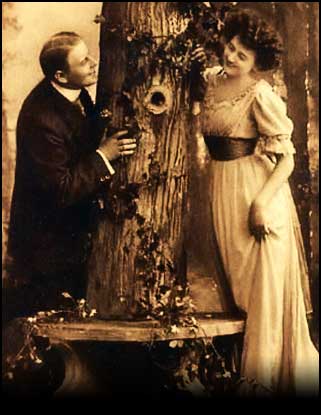[vc_row][vc_column width=”1/1″][vc_row_inner][vc_column_inner width=”1/1″][vc_column_text] In 1860, Bessie & Andrew Low began to build a high-style Italianate, brick mansion named “Vint Hill” on their prosperous cattle & sheep farm. Throughout the Civil War, the Lows and their children (said to be 15) flew the Union Jack flag, a symbol of neutrality, over the property to save their newly built home. In 1863, one known incident, the “Grapewood Encounter” broke this unspoken Civil War neutrality agreement. Colonel John S. Mosby and his rangers skirmished with Union forces near the back gate. Rich in heritage, the original farmhouse was remodeled and renamed, Silvermead, for the Low’s eldest son Douglas and his new bride, Marie in 1885. At the time, the newlyweds were conspicuously missing a kitchen, Bessie Low preferred the young couple eat at the manor house. Mitchell Harrison, a Philadelphia entrepreneur purchased Vint Hill in 1911. He renovated in 1916, converting the home to a Colonial Revival-style Country house, doubling its original size. The mansion became a hub of Fauquier County Society, with elegant parties for fashionable guests. Unprecedented in Fauquier County, Mr. Harrison modernized the farm into a premier country estate with purebred livestock. During World War II, in June of 1942, the United States Army bought the farm and immediately the Second Signal Service Battalion began interception of enemy radio communication, establishing our first “listening post” and intelligence training headquarters. It later became Officers’ Club and Quarters and in 1992, the post commander made the facility a community club and renamed it “The Inn at Vint Hill.” Today, Vint Hill offers a superior quality of life and the Inn is its heart.[/vc_column_text][/vc_column_inner][/vc_row_inner][/vc_column][/vc_row]
In 1860, Bessie & Andrew Low began to build a high-style Italianate, brick mansion named “Vint Hill” on their prosperous cattle & sheep farm. Throughout the Civil War, the Lows and their children (said to be 15) flew the Union Jack flag, a symbol of neutrality, over the property to save their newly built home. In 1863, one known incident, the “Grapewood Encounter” broke this unspoken Civil War neutrality agreement. Colonel John S. Mosby and his rangers skirmished with Union forces near the back gate. Rich in heritage, the original farmhouse was remodeled and renamed, Silvermead, for the Low’s eldest son Douglas and his new bride, Marie in 1885. At the time, the newlyweds were conspicuously missing a kitchen, Bessie Low preferred the young couple eat at the manor house. Mitchell Harrison, a Philadelphia entrepreneur purchased Vint Hill in 1911. He renovated in 1916, converting the home to a Colonial Revival-style Country house, doubling its original size. The mansion became a hub of Fauquier County Society, with elegant parties for fashionable guests. Unprecedented in Fauquier County, Mr. Harrison modernized the farm into a premier country estate with purebred livestock. During World War II, in June of 1942, the United States Army bought the farm and immediately the Second Signal Service Battalion began interception of enemy radio communication, establishing our first “listening post” and intelligence training headquarters. It later became Officers’ Club and Quarters and in 1992, the post commander made the facility a community club and renamed it “The Inn at Vint Hill.” Today, Vint Hill offers a superior quality of life and the Inn is its heart.[/vc_column_text][/vc_column_inner][/vc_row_inner][/vc_column][/vc_row]